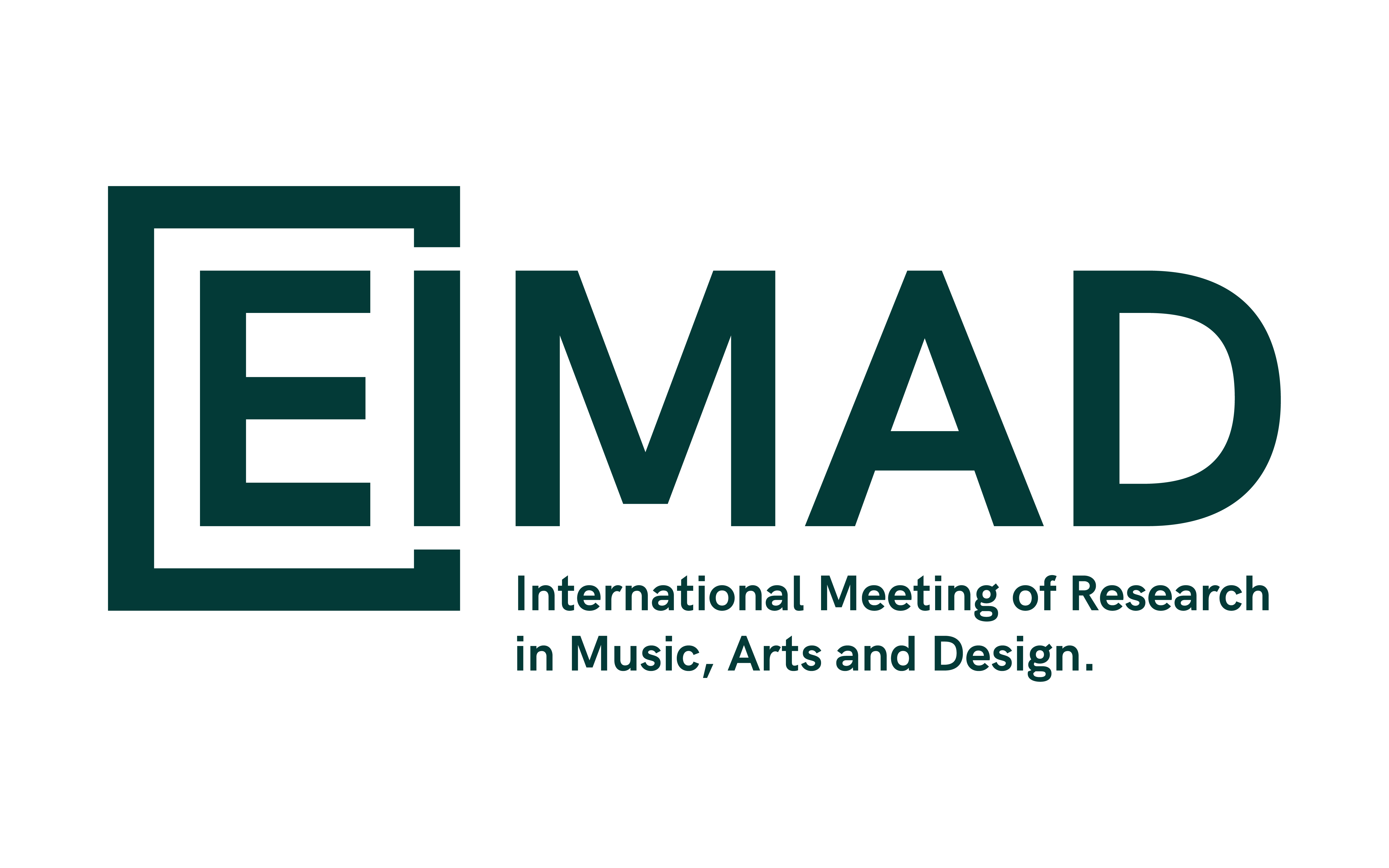9th Edition
JORGE FRASCARA
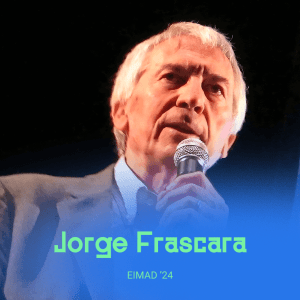
Professor and Designer
More info...
Jorge Frascara is Professor Emeritus and former Chairman, Art and Design, University of Alberta; Honorary Professor, Emily Carr University; Fellow, Society of Graphic Designers of Canada; Former-President of Ico-D (International Council of Design); Advisor, Doctorate in Design, IUAV University of Venice; Advisory Board Member, Master Design Hochschule Luzern; International Advisory Board member, Swiss Centre for Design and Health; and Editorial Board Member of Visible Language, Design Issues, and Information Design Journal.
He published more than 90 articles and eleven books, the last in English being Information Design as Principled Action (Common Ground 2015), the last in Spanish, Enseñando Diseño (Ediciones Infinito 2018), and the best sold is Design and the Social Sciences: Making connections (Taylor & Francis 2002). He has been Working Group Convener for the International Standards Organization (ISO), and Advisor for the Canadian Standards Association and the Canadian Standards Council on graphic symbols for public information. He has been a guest lecturer in 26 countries, and has received honors from eight countries for his socially-oriented practice and promotion of communication design. In design education he created the Bachelor of Design with Pathways in 1997 at the University of Alberta, possibly the first interdisciplinary bachelor program in design, offering pathways though Business, Computer Sciences, Engineering, Printmaking, and Social Sciences.
Past clients include the Government of Canada, the Government of Alberta, the Mission Possible Coalition (traffic safety), the Alberta Drug Utilization Program, Alberta Health Services, and the Health Services Evaluation Centre of Emilia Romagna, Italy. He now lives in Lucerne, Switzerland, consulting on communication design, mainly for projects related to information design, health and safety design, and design education.
The problem of quality in communication design practice and education: where we were, where we are, and where we should be
Communication design is not a fine art, but it is also a fine art.
Design is a situated field: frameworks, methods, contexts, and realities.
The triple responsibility of today’s designers: professional, social, and environmental.
Humanity-centered, evidence-based and outcomes-oriented. Accountability.
Design practice and education: knowledge domain and thinking quality. Thinking, seeing, learning, sensing, acting, evaluating, and adjusting, a continuous spiral loop.
The importance of doubt. Complexity and simplicity: the art of strategy. Complexity cannot be simplified, nevertheless… The cybernetic concept of requisite variety.
I close this abstract with a text based on the last paragraph of my recent She-Ji article:
“A design intervention is normally required in response to needs, to problems, or to seizing opportunities for positive creative action. The quality of the resulting design is related to the degree to which it achieves the objectives pursued (without having negative side-effects in other areas). Quality in communication design, is defined by a practice that uses the best possible evidence to support decisions, and that is oriented at producing professionally, socially, and environmentally positive outcomes. This must be the case if we want design to have a meaningful role in society. This is no easy task, nor is it simple. Are design practitioners, educators, and students ready for this?”
DAVID BIHANIC
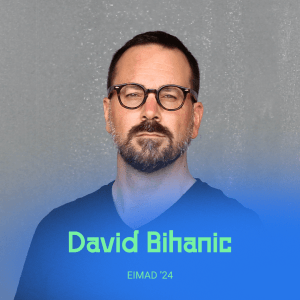
Designer, and Senior Research
University of Paris 1 Pantheon-Sorbonne
http://davidbihanic.com/
https://www.ensadlab.fr/fr/david-bihanic/
More info...
David Bihanic is a Designer, an Associate Professor at the University of Paris I Pantheon-Sorbonne (Permanent Researcher at ACTE Institute — EA 7539), and a Senior Research Fellow at “The École nationale supérieure des Arts Décoratifs”. He published several books and book chapters, as well as numerous scientific articles relating to the contemporary stakes and challenges of Design. Several of them deals in particular with the interaction and cross-pollination between Urban Planning, Architecture and Design Sciences.
In his current research (bringing together practice and theory), he examines aesthetic, epistemological, and praxeological constraints as well as determinations of Design Practice in its collaboration/cooperation with Engineering Sciences, as well as in his relation to architecture. As a Data Design specialist, he examines the different paradigms of visualization and manipulation of large and complex datasets, and creates idiomatic visual formalisms offering greater ‘expressiveness’ of information.
His last books are Matrices cowritten with Matali Crasset (Presses du réel/Athom, 2023 — In French only) ; Marcel Lods. Éduquer à l’architecture moderne (Athom, 2022 — In French only) ; Empavillonner (Athom, 2021 — In French only) ; staatliche bauhaus cent pour cent 1919-2019 (T&P Publishing, 2019 — In French only) ; Design en regards (Art Book Magazine, EnsAD, La Cité du design, 2019 — In French only) ; Data Design. Les données comme matériau de création (Gallimard/Alternatives, 2018 — In French only) ; New Challenges for Data Design (Springer, 2015) ; Empowering Users through Design. Interdisciplinary Studies and Combined Approaches for Technological Products and Services (Springer, 2015).
New, New Bauhaus
What then of the positions, claims and aspirations relating to the “New European Bauhaus” project promoted by the President of the European Commission, the German Christian Democrat Ursula von der Leyen? Are they really in line with those set out by the pioneers, most notably the founder of the Weimar School, the architect Walter Gropius? In this talk, I’ll take a look back at the major texts of these early modernists (Gropius and others) and identify some of their key ideas and conceptions, which are still highly relevant and useful for (re)thinking the relationship between Creation and Society.
HELENA CASPURRO
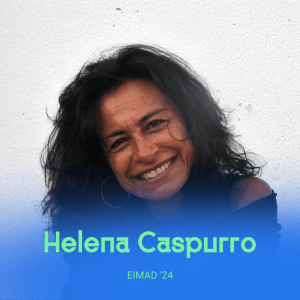
Professor, Pianist and Singer-songwriter
www.palui.pt
More info...
Helena Caspurro, born in Porto, where she lives, is an Auxiliar Professor at the Department of Communication and Art (DeCA) at the University of Aveiro (UA), an integrated researcher at the INET-md and a collaborating at the CESEM (Nova de Lisboa), university where she also taught. Pianist, singer-songwriter, in a jazz and fusion genre, she has edited three original CDs, Mulher Avestruz (2003), Colapsopira (2009) and Paluí (2013), the last of which constitutes the musical genesis of artistic research projects that she develops in an educational context and in the Portuguese community, in co-authorship with Pedro Carvalho de Almeida, designer and teacher at DeCA. Of the numerous participants, there are students and teachers of music and design from the UA, more than six hundred children from the elementary schools of Santa Maria da Feira and their teachers, as well as, achieving social and inclusive objectives, such as combating the stigma of mental illness, users and patients of the Psychiatric Hospital Magalhães Lemos (Porto), students and teachers of the Polytechnic Institute of Porto, the Art and Quality Childhood Center of Aveiro and artists from Casa da Música. From these projects, several works and initiatives were germinated and presented in the country, all resulted from artistic, transdisciplinary, collaborative and co-creation processes, such as: the edition of the book Paluí: Viagem sonoras que a Língua Portuguesa conta (2017), videos, workshops, exhibitions, sound and interactive artifacts, music and theater performances, and, finally, the musical and transdisciplinary concert, Paluí, está aqui? Histórias sonoras para cantos interiores, presented at the festival Ao Alcance de Todos, at Casa da Música (2019) – edited in Documentary and Film-Concert (2020). At the invitation of the Educational Service of this last institution, she was artistic and pedagogical director of musical and scenic concerts that she created and presented in both of its concert halls (2011; 2013), and, at the invitation of the APEM, she composed Coculi (2018) for the Cantar Mais website. She works regularly with the percussionist Brendan Hemsworth in the production of her musical work. Paulo Neto, António Miguel, Filipe Lopes are musicians with whom she collaborates in the creation and coordination of the various transdisciplinary and artistic projects she directed, together with José Geraldo (actor), Patrícia Costa (costume designer), António Valente (filmmaker), Marcelo Baptista (image projection), António Oliveira (staging), Carlos Silva (videoart), Miguel Almeida and João Neto (video design). She recorded and shared artistic activity with several musicians, such as Elizabeth Davis, Arnaldo Fonseca, António Aguiar, Carlos Mendes, Pedro Lima Pereira, Andrés Tarabbia (Pancho), Mário Santos, Pedro Almeida, Nuno Aragão, António Miguel (Tomi), Diana Basto, among many others. The improvisation in musical learning, to which she dedicated her doctoral dissertation (2006), is one of the objects of choice in guiding the subjects that she teaches and develops as educator and musician. Her musical and artistic activities also include: participation in radio programs and soundtracks of one Portuguese soap; the presentation as a guest performer at Tedx-Aveiro (2013) and, as a singer, in concerts in Portugal with the Filarmonia das Beiras orchestra; editing several video clips, in collaboration with other authors and the Cine Clube de Avanca, some of which were selected at numerous international film festivals, such as Navegar, which was nominated in 2014 at the International Children’s Film Festival in Lucknow (India). She hopes to publish his new musical work and CD, Massaiá, in 2023.
Transdisciplinary experiences of artistic co creation germinated in music: engaging school and society
It is increasingly assumed that education is a construction that cannot be disconnected from society itself – its work, geographies and cultural meanings; its continuous movement; its individuals and agents who represent and transform it, even beyond the school. The commitment and responsibility of everyone in this complex and unfinished task are therefore ingredients of cultural projects in contemporary democratic societies, enshrined in initiatives, philosophies and ministerial programmes that require constant reflection, improvement and creativity. Perhaps for the same reasons, i.e. everyone’s commitment to achieving common cultural goals, there are growing visions of the arts as objects and spaces for social construction. Participatory practices in the arts, including music in the community, show this growing phenomenon, mobilising processes, methodologies and paradigms of study which, in their epistemological diversity, have made it possible to experience, demonstrate, describe and characterise, tacitly or verbally, the vast meanings of the experiences carried out. Reflecting the complexity that characterises contemporary societies in their purposes and modes of action, they have resulted in a multifaceted set of initiatives aimed at specific communities, with programmes designed to respond to problems that are also unique, generally surrounding the vast issue of social exclusion. Educational contexts, such as primary, pre-school and higher education curricula, their practices and programmes, due to the need not only to constantly articulate with cultural society, but also to broaden the concepts of literacy around which teacher training practices are designed, are also universes of study and research with social, pedagogical and artistic value and scope.
The aim of this communication is to present a set of projects that were born out of the author’s music, with social and artistic purposes, and which, taking the form of (co)creative and transdisciplinary experiences, were created and implemented under her direction, as a researcher, musician and teacher, and other specialists from the Department of Communication and Art at the University of Aveiro (UA), such as designer Pedro Carvalho de Almeida, in different communities and educational universes across the country. Involving close to a thousand people, they are mainly concerned with research born out of Paluí (2013) and which, associated with the construction of common cultural objectives, such as the development of curricula, musical and transdisciplinary creation and the fight against the stigma of mental illness – which resulted in the publication of a book (2017) and, among other events, the presentation of a performance at the Ao Alcance de todos Festival at Casa da Música (2019) – mobilised, in a context of social, cooperative and artistic co-creation engagement, music and design students and teachers of UA and, respectively: 1) communities in Santa Maria da Feira (primary and pre-school students and teachers); 2) patients at the Magalhães Lemos Hospital in Porto (users of the Psychosocial Rehabilitation Service), music students and lecturers from the Polytechnic Institute of Porto, educators and children from the Aveiro Arts and Quality Centre and artists from Casa da Música. Although with eminently aesthetic purposes but representing a conceptual and methodological continuity that began with Paluí, a brief exhibition of transdisciplinary works resulting from the author’s most recent musical creation, Massaiá (2023), will finally be shown. In addition to the contemplation of the results of any of these projects, made possible, even if not in their entirety, by the presentation of images, objects and videos, the aim is to share and provoke critical reflections on issues such as music, the arts and education, their connection with society, highlighting, in the analysis, the role of creativity, transdisciplinarity and collaborative processes; resulting from this, the change in the definition of the roles of the artists themselves, including music teachers, in order to respond to the challenges posed by the type of social and cultural commitment in which they are involved.
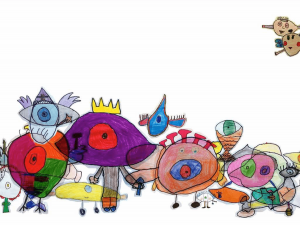
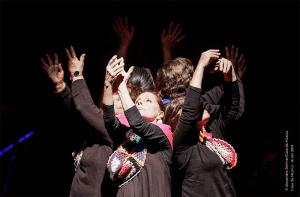
PETER BENZ

Professor, architect, and “experiential designer”
President of Bauhaus-Universität Weimar
More info...
Peter Benz studied Architecture at the TU Kaiserslautern and Bauhaus-Universität Weimar. After his graduation in 1998, he worked as a freelance exhibition designer until he was invited to teach at Bauhaus-Universtät Weimar’s Faculty of Media in 2001. In 2006, he received professorial position at Hong Kong Baptist University and helped establishing the newly founded Academy of Visual Arts in a variety of functional positions. In March 2023 he returned to Germany to take up the position of President of his alma mater, Bauhaus-Universität Weimar.
Academically, Benz considers himself an »experiential designer«, focussed on researching and developing »experiences« as a creative medium. He is also interested in the design potential of everyday objects and of un-designed spaces. More recently, his projects also re-focused on issues of creative livelihoods, gender integration in the creative arts and the development of digital tools for teaching in art and design.
Houston, we have a Problem
An introductory case study into the field of experimental design, followed by some developments, considering how the direction of a university as a design task that results in an aesthetic experience of the university.
JOANIE LEMERCIER
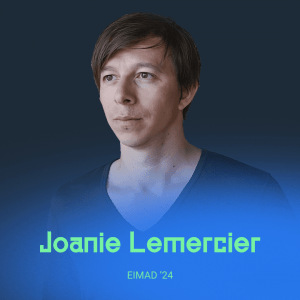
Visual artist and Environmental activist
Studio Joanie Lemercier
More info...
Joanie Lemercier (b. 1982) is a French visual artist and environmental activist whose work explores human perception through the manipulation of light in space. Working primarily with light projection and computer programming, Lemercier transforms the appearance of everyday objects and forms, bending reality to his imagination. His work transcends the flat surface, extending dimensionality through the interplay of light and shadow on materials such as wood, glass, paper, ceramics, textiles and water.Lemercier was first introduced to the process of creating art on a computer at agefive by attending classes on pattern design for fabrics that were taught by his mother. This early education grounded his interest in physical structures: geometry, patterns, and minimalistforms. As Lemercier’s work evolved, he began to explore these elements throughthe physics and philosophy of how light can be used to alter perceived reality.
Much of Lemercier’s practice is inspired by nature and reflects onthe representation of the natural world through mathematics, science, and technology. Abstract environments rendered as refined grids, lines, shadows, and volumes give way to majestic landscapes assembled from these same minimalist forms. In recent years,Lemercier has become increasingly concerned with climate change and environmental degradation, lending his projection skills and artistry to activist causes and groups such as Extinction Rebellion, meticulously tracking and publishing his studio’s carbon footprint, and supporting initiatives like #CleanNFT to encourage other digital artists to reduce their own environmental impact. His latest video installation, The Hambach forest and the Technological Sublime, premiered at Fundación Telefónica in 2021 on the occasion of the artist’s first major solo show, looks at the devastating effects of coal mining on one of Europe’s oldest forests.
Lemercier has been working with projected light since 2006 and co-founded the acclaimed visual label AntiVJwith artists Yannick Jacquet, Romain Tardy and Olivier Ratsi in 2008.He has been represented by a New York based gallery since 2010.Focusing his practice on installations and gallery work, he has been exhibited around the globe in institutions such as the China Museum of Digital Art in Beijing, Art Basel Miami, Sundance Film Festival, Espacio Fundación Telefónica in Madrid and collaborated with several sound artists: Murcof, Flying Lotus and JayZ.Since founding his creative studio in Brussels in 2013, Lemercier hasbeen developing ever more ambitious installations, gallery pieces, and research experiments that expand the creative possibilities of projected light in space. In recent years, he has sought to completely dematerialize the projection surface, working withtransparent materials and water mist.
Since 2015, the studio is now based in Brussels, Belgium, and ran by Juliette Bibasse.
Art, technology and activism
Joanie Lemercier, visual artist & climate activist, presents a technical, artistic, and political perspective on his work. He will share insights on his process and behind the scenes of his commitment to various climate-related issues.
For about fifteen years, Joanie Lemercier has been experimenting with unconventional projection surfaces as a space for expression. In the studio’s recent projects, the extractivism inherent in the use of digital tools, their energy consumption, as well as the creation of new imaginaries, are central questions and research axes. It appears essential and urgent to embody a political commitment in his artistic practice and the experiences he offers to various audiences.


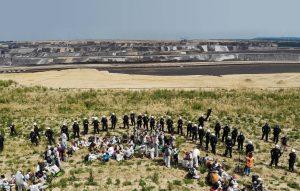
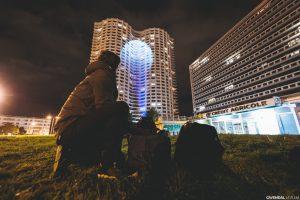

ELLEN LUPTON
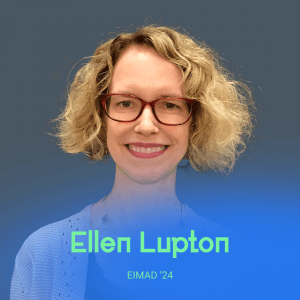
Writer, educator, designer, and curator
Betty Cooke and William O. Steinmetz Design Chair, Maryland Institute College of Art Curator Emerita, Cooper Hewitt, Smithsonian Design Museum
More info...
Ellen Lupton is the Betty Cooke and William O. Steinmetz Design Chair at Maryland Institute College of Art in Baltimore (MICA). She has authored and co-authored numerous books on design processes, including Thinking with Type, Graphic Design Thinking, Health Design Thinking, and Extra Bold: A Feminist, Inclusive, Anti-Racist, Nonbinary Field Guide for Graphic Designers. In the works: the third edition of Thinking with Type. She is Curator Emerita at Cooper Hewitt, Smithsonian Design Museum in New York City, where she organized numerous exhibitions, including Herbert Bayer: Bauhaus Master, Face Values: Understanding Artificial Intelligence, The Senses: Design Beyond Vision, and Design and Healing: Creative Responses to Epidemics. She is an AIGA Gold Medalist and a Fellow of the American Academy of Arts & Sciences.
Designing while Human
How can we open up design practice to include overlooked people and practices? Ellen Lupton will share hidden stories about typography, from printer’s widows to widow printers. Her recent books Extra Bold: Um Guia Feminista, Inclusivo, Antirracista, Não Binário para Designers and Pensar Com Tipos, 3rd Edition, are published by Olhares. Revising Pensar Com Tipos required questioning everything. What assumptions are baked into our design vocabulary? How can type education become more forgiving? Where are the women and designers of color? What stories lurk behind basic forms such as capital letters and reverse stress? Open your mind to a changing discourse.
8th Edition
PEDRO REBELO

Composer, Performer and Sound Artist
pedrorebelo.org
More info...
Pedro is a composer, sound artist and performer. In 2002, he was awarded a PhD by the University of Edinburgh where he conducted research in both music and architecture.
Pedro has recently led participatory projects involving communities in Belfast, favelas in Maré, Rio de Janeiro, travelling communities in Portugal and a slum town in Mozambique. This work has resulted in sound art exhibitions at venues such as the Metropolitan Arts Centre, Belfast, Centro Cultural Português Maputo, Espaço Ecco in Brasilia and Parque Lage and Museu da Maré in Rio, Museu Nacional Grão Vasco, Golden Thread Gallery, Witworth Gallery Manchester, Convento de São Francisco Coimbra and MAC Nitéroi. His music has been presented in venues such as the Melbourne Recital Hall, National Concert Hall Dublin, Queen Elizabeth Hall, Ars Electronica, Casa da Música, and in events such as Weimarer Frühjahrstage fur zeitgenössische Musik, Wien Modern Festival, Cynetart and Música Viva. His work as a pianist and improvisor has been released by Creative Source Recordings and he has collaborated with musicians such as Chris Brown, Mark Applebaum, Carlos Zingaro, Evan Parker and Pauline Oliveros as well as artists such as Suzanne Lacy.
His writings reflect his approach to design and creative practice in a wider understanding of contemporary culture and emerging technologies. Pedro has been Visiting Professor at Stanford University (2007), senior visiting professor at UFRJ, Brazil (2014) and Collaborating Researcher at INEM-md Universidade Nova, Lisboa (2016). He has been Music Chair for international conferences such as ICMC 2008, SMC 2009, ISMIR 2012 and has been invited keynote speaker at ANPPOM 2017, ISEA 2017, CCMMR 2016 and EMS 2013. At Queen’s University Belfast, he has held posts as Director of Education, Director of Research and Head of School. In 2012 he was appointed Professor of Sonic Arts at Queen’s and awarded the Northern Bank’s “Building Tomorrow’s Belfast” prize. He has recently been awarded two major grants from the Arts and Humanities Research Council including the interdisciplinary project “Sounding Conflict”, investigating relationships between sound, music and conflict situations. Ongoing research interests include immersive sound design and augmented listening experiences. Pedro has been appointed Director of the Sonic Arts Research Centre in 2021.
UN-DISCIPLINING SOUND AND MUSIC: THINKING THROUGH THE LISTENING EXPERIENCE
The talk addresses some pitfalls associated with the notion of discipline from the perspective of the listening experience. Drawing from examples of research and art practices from across a variety of fields, I intend to open possibilities of listening which transverses knowledge and practice conventions in the domain of the aural. The talk takes on the term ‘Sound and Music’ as a vehicle to help us think through processes of un-disciplining and decolonisation of listening. I will draw on socially engaged practices to articulate strategies that challenge disciplinary divides through lived experience. Examples from across academic and artistic practices illustrate opportunities for un-disciplining and un-doing practices in the context of some of the challenged we face today.
CARLOS TEIXEIRA

Charles L. Owen Professor in Design, Director of Action Lab and PhD Program Coordinator
id.iit.edu/people/carlos-teixeira
More info...
Carlos Teixeira is the Charles L. Owen Professor in Design at IIT Institute of Design (ID), where he teaches graduate courses and advises doctoral students on the strategic use of design capabilities in complex spaces of innovation. He is also faculty director of the Action Lab.
He is the founder of ORGE Innovation Consulting, which advises global leaders in organizations on how to build the know-how to innovate through design capabilities and strategies. Carlos received a doctorate in design from ID in 2002. Previous to his PhD, he received a master’s and bachelor’s degree in design from Pontifícia Universidade Católica in Rio de Janeiro, Brazil.
Before joining ID in 2016, Carlos served as a faculty member at Parsons School of Design in New York (2003–09), where he was instrumental in developing undergraduate and graduate programs in strategic design and transdisciplinary design. In 2014 he received the Distinguished Teaching Award by The New School for his innovative pedagogy in graduate design studios and projects.
Carlos’s research interests include the areas of design strategy, open innovation, and sustainable solutions. The central question of his current research is, “How can design affect the lives and wellbeing of people and communities by leveraging the interconnectivity of markets, technology, environment, finance, and social networks?” In 2019 Carlos received a $100,000 grant from the Kresge Foundation for the Flag Calumet research project, part of a partnership between ID and the Calumet Cooperative.
WHAT RESEARCH DOES A Ph.D. IN DESIGN DO? HOW AND WHY IS IT RELEVANT?
In this lecture, Carlos Teixeira, Director of the Ph.D. Program in Design at IIT – Institute of Design argues that individuals, communities, and organizations are at the intersection of multiple social, environmental, and technological disruptions. Their life and work experiences will result from the solutions we design for those new realities. He will present doctoral research findings addressing contemporary design challenges in sustainability, equity, and intelligence. The central question of his research is, “How can design affect the lives and wellbeing of people and communities by leveraging the interconnectivity of markets, technology, environment, finance, and social networks?” In addition, case studies with design solutions in food, energy, and mobility systems will demonstrate practical applications of research findings from doctoral studies in design.
MARKUS WEISBECK
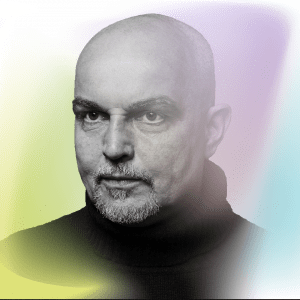
Designer, Visual Researcher and Professor
markusweisbeck.studio
herbert.gd
More info...
Markus Weisbeck is a graphic designer and teacher based in Weimar and Frankfurt am Main. He founded the Design-Studio Surface in 2000.
Weisbeck has lectured and participated in numerous international conferences on design related subjects and has taught at various universities including the UDK Berlin, University Darmstadt the HGB Leipzig, Pati Korea and has been teaching as Professor for Grafik Design at Bauhaus in Weimar since 2011. He is frequent jury member in design competitions worldwide and part-time writer for the Frankfurter Allgemeine Zeitung, Frieze and Form in the discipline of Grafik Design. Since 2013 he is an official member of the Alliance Graphique Internationale.
He established “The Space for Visual Research” as a workshop and laboratory for experimental research into new graphic, abstract and visual worlds at the Bauhaus-University Weimar in 2013. The Space’s mission is to support the exploratory urge for new aesthetics, in particular by empowering design students to create their own individual imagery. Workshops were realized at the House of the Artists, Teheran, Iran, Taiwan Tech, Taiwan, Design Summer Hangzhou, China, Paju Typography Institute PaTI, Korea, UCB La Paz, Bolivia, Y Design Festival, Macao, China, 2019, Gwangju Biennale, Korea, 2019 and at the AGI Rotterdam.
Through collaborations, curatorial projects and publications, Weisbeck has developed a unique practice that expands collaborative form from a pragmatic structure of working together to the joint development of content.
His design projects include the art direction of the Museum für Moderne Kunst Frankfurt am Main, the Forsythe Company, Luma Arles, Fogo Island Arts, Documenta 11, the Corporate Identity for Zumtobel, the Jewish Museum Frankfurt, Gwanju Folly II Korea, the Städel Architecture Class, the German Pavillion: Venice Biennale 2007 and 2009, the 7th International Architecture Biennial (BIA) São Paulo, Manifesta 7, publication series for Sternberg Press as well as many other books for (individual) artists.
THE SPACE FOR VISUAL RESEARCH
The Space for Visual Research (SfVR) is a platform for experimental image production. Established as an extracurricular laboratory at the Bauhaus University Weimar back in 2013, it encourages graphic designers to explore alternative modes of making and expand their creative repertoire with alternative modes of making. Prof. Weisbeck shows concepts & visual examples of works which are developed in the context of this design-thinking laboratory.
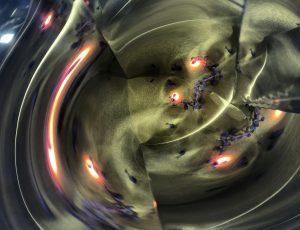
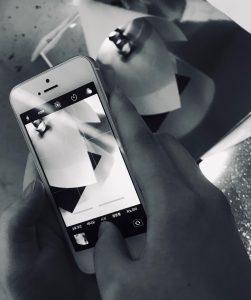
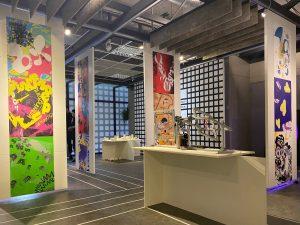
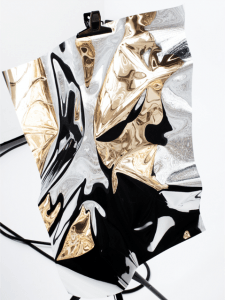
SABINE JUNGINGER
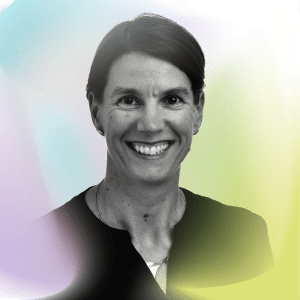
Professor, Researcher and Designer
www.hslu.ch/en/lucerne-university-of-applied-sciences-and-arts/
More info...
Prof. Sabine Junginger (PhD) is an expert on the principles, methods and processes of human-centred design. Her research into design theories and design practices relevant to public and private organizations is internationally recognized. In addition, she explores policy-making and policy implementation as activities of design that are especially important to succeed in the digital transformation.
Her academic work draws on her previous careers in journalism, marketing and public relations. Before pursuing a design education, she has worked as a journalist in print media, with Designworks/USA, a BMW company in Newbury Park, California and Siemens Corporate Design in Munich as well as with the German American Trade Center in Atlanta. For the latter, she also served as US communication point for the Swiss manufacturer Bodenschatz.
Today, she serves on a number of international editorial and advisory boards of academic, civil society and business organisations, including the editorial boards of Design Issues (MIT Press) and She Ji (Tongji University), the International Advisory Board of the Design Research Society and the Research Committee of the Free University Bozen-Bolzano (Italy), GovLab Austria, the European Forum Alpbach, the German University of Public Administration Sciences, and Dataport. She is Chairwoman of the German non-profit Politics for Tomorrow, Co-Founder of the Swiss Service Design Network and has been granted a biannually renewable Fellowship by the Hertie School in Berlin since 2009.
Prof. Dr. Junginger received her MA in Communication Planning and Information Design and her PhD in Design from the renowned School of Design at Carnegie Mellon University, both under the supervision of Prof. Dr. Richard Buchanan and Prof. Dr. Denise Rousseau. Her Master thesis combined interaction design and communication design to develop a digital patient-centered hospital wayfinding system. Her doctoral thesis extended a human-centred interaction design approach to problems of organizational change and management. Her previous academic positions include Lecturer and founding member of design research group imaginationLancaster at the Lancaster University (UK) and Associate Professor at the Kolding School of Design (DK).
MOVING FROM PROBABILITIES TO POSSIBILITIES: HOW WILL THE NEW EUROPEAN BAUHAUS SERVE US?
In the past, design moved to center stage when people realized that their existing values, beliefs, norms and behaviors no longer served the needs of society and the individual. It is no coincidence that the original Bauhaus offered rigorous design education among the uncertainties of the Weimar Republic, nor that the Ulm School of Design (HFG) forged new possibilities for the future in the aftermath of the Nazi regime. When nothing seems quite what it was and when the status quo is no longer tenable, the ways in which we conceive, plan, develop, and deliver new paths into the unknown acquire new significance. We move from probabilities to possibilities. The New European Bauhaus, too, emerges in the context of a newly experienced VUCA World – a world full of Volatility, Uncertainty, Complexity and Ambiguity. How will this initiative serve us? How will it prepare design practitioners and design researchers to contribute?
7th Edition
LUZIA AURORA ROCHA
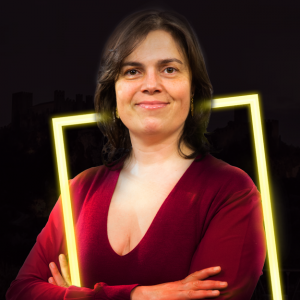
Graduates in Musicology from NOVA University of Lisbon in 1999 where she also completed a Master degree and PhD degree in Musicology (2004, 2012).
More info...
STREET ART E ICONOGRAFIA MUSICAL – O ESTUDO DE CASO DAS RUAS DE LISBOA
Nos últimos anos, a arte de rua foi enquadrada como parte de nossa herança cultural; entretanto, até o momento não houve um entendimento claro quanto à definição e/ ou conceptualização desta forma artística como “patrimônio”. Nem é consensual a crescente atenção que lhe é dada em termos de conservação, memória cultural, identidade, poder e intervenção. Ainda amplamente considerada uma forma de arte “bastarda”, como diria Georges Brassaï, a arte urbana luta para se afirmar perante a opinião pública e especializada. Esta palestra pretende analisar algumas obras presentes nas ruas de Lisboa, com referências à música (iconografia musical), ao abordar preservação vs. efemeridade, mutação, mutilação, aceitação por observadores locais e estrangeiros e compreender, afinal, qual é o papel de música e instrumentos musicais neste tipo de arte.
LEYLA ACAROGLU
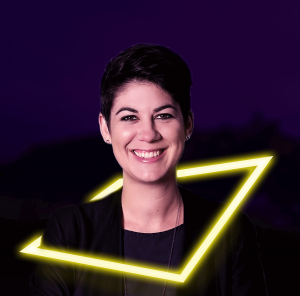
Designer, sociologist, sustainability provocateur, and 2016 United Nations Champion of the Earth. Founder of Disrupt Design, The UnSchool, and CO Project Farm.
More info...
Design Disruptor, impulsionadora de limites criativos e provocadora cultural, Dr. Leyla Acaroglu (A-jar-a-loo) incorpora a inovação que desencadeia mudanças positivas. Designer premiada, socióloga e especialista em sustentabilidade, Leyla é reconhecida internacionalmente como uma força impulsionadora no movimento por um futuro circular e sustentável.
Como empreendedora social, Leyla é a fundadora da agência criativa Disrupt Design e desenvolveu o Método de Design Disruptivo. Ela é a fundadora do premiado laboratório experimental de conhecimento The UnSchool of Disruptive Design e, mais recentemente, fundou o CO Project Brain Spa Farm.
Leyla foi premiada pelo seu trabalho no avanço da ciência e inovação como Campeã da Terra 2016 pelo Programa das Nações Unidas para o Meio Ambiente, e sua TEDTalk em 2013 angariou mais de um milhão de visualizações. Deu palestras por todo o mundo, sobre tópicos de redesenho de sistemas à ética da tecnologia e do poder da mudança Disruptiva.
Leyla obteve o PhD da RMIT University em design centrado na mudança e ganhou uma série de prémios pelo seu trabalho, incluindo a nomeação como uma das 100 pessoas mais influentes de Melbourne (embora viva agora entre Nova York e a Europa).
Os artigos de Leyla sobre abordagens baseadas em sistemas para problemas complexos foram apresentados em várias publicações, incluindo Quartz e The New York Times. Como designer, seus trabalhos como Design Play Cards, Game Changer Game, Secret Life of Things, Designercise e Gender Equity Toolkit estão na vanguarda do activated experience design. É autora de vários manuais para agentes de mudança e continua a pesquisar novos métodos de resolver problemas sociais complexos através de intervenções bem planeadas. O trabalho criativo de Leyla é altamente aclamado, tendo sido apresentado numa exposição permanente no museu Leonardo di Vinci em Milão e ganho comissões da Galeria Nacional de Victoria.
É uma palestrante respeitada internacionalmente e especialista no seu campo, tendo conduzido milhares de horas de workshops, palestras, ativações e experiências educacionais em todo o mundo. Leyla foi investigadora visitante na NYU e Innovator in Residence no Center for Social Innovation NYC. Foi também Artist in Residence convidada da Autodesk e geriu o desenvolvimento do ‘Greenfly’, uma das primeiras ferramentas online de avaliação do ciclo de vida para designers.
Leyla é regularmente convidada a fornecer opiniões profissionais na rádio e na TV como regular no programa de comentários políticos da ABC TV, QandA, e na PBS, em conjunto com uma série de programas internacionais.
HOW CAN A DISRUPTIVE DESIGN EDUCATION ACTIVATE SUSTAINABILITY AND POSITIVE SYSTEMS CHANGE
Agora é o momento para mudanças radicais, em que todos os aspectos da sociedade estão a ser impactados e transformados. A grande questão é quais mudanças nos sistemas resultarão num futuro positivo e sustentável? Como podemos projetar experiências educativas que forneçam as ferramentas e técnicas necessárias agora para apoiar a transformação que está já em andamento? A economia circular oferece muitas opções para mudanças criativas, uma vez que desafia o formato de negócios, desenvolvimento de produtos e processos de produção. Porém, a criação de uma economia circular exige que todos nós mudemos a maneira como fazemos as coisas atualmente; como vivemos e trabalhamos, projetamos e construímos, consumimos e nos movimentamos. Este é um momento perturbador e criativo, pois passamos por grandes mudanças culturais em todos os aspectos da vida, o que podemos descobrir das crises atuais para que possamos fazer mudanças que resultem num futuro justo e sustentável?
KATJA TSCHIMMEL

Managing owner of MINDSHAKE. Guest Professor at Porto Business School, the Economy Faculty of the University of Porto (Portugal) and at Laurea University (Finland).
More info...
Katja Tschimmel, alemã de nascimento e portuguesa por escolha, é Consultora e Formadora Executiva, Investigadora e Docente, Coach e Palestrante em diversos Congressos.
Com um Ph.D em Design e Mestrado em Criatividade Aplicada, Katja pesquisa nas áreas de Creative Thinking, Design Thinking, Creative Processes e inovação há mais de 20 anos. Apresenta o seu trabalho em conferências nacionais e internacionais, tendo sido oradora principal em inúmeras conferências internacionais. Publica regularmente na área da Criatividade e Design, tendo publicado recentemente o livro coletivo “O Vírus da Criatividade – um livro sobre e para o Pensamento Criativo” (2019). Katja é autora do Modelo de Inovação e Design Thinking “Evolution 6”, que é licenciada pela Creative Commons, CC by-SA desde 2015.
Katja é administradora da MINDSHAKE, uma Consultora em Pensamento e Design Criativo. Com o modelo “Evolution 6”, dá coaching a processos criativos em departamentos de inovação de várias empresas, como Adidas, Farfetch, Lipor, NOS ou Roche. Como formadora e facilitator, Katja tem muita experiência na concepção e realização de workshops sobre Criatividade e Inovação, Processos Criativos nas Organizações, (Serviço) Design Thinking, Ferramentas de Pensamento Criativo e Dinâmica de Grupo. Acredita que a conscientização sobre os fatores que estimulam a criatividade contribui para mais eficiência nos processos de inovação.
Actualmente a Katja é Professora Convidada na Porto Business School, na Faculdade de Economia da Universidade do Porto e na Laurea University (Finlândia). Durante 15 anos foi Professora na ESAD, Escola Superior de Artes e Design de Matosinhos (Portugal), onde coordenou entre 2014 e 2017 o projeto de investigação D-THINK – Design Thinking Aplicado à Educação e Formação, Programa Erasmus +, KA2 – Cooperação e Inovação para Boas Práticas. Na ESAD coordenou também o primeiro Curso de Pós Graduação em Design Thinking em Portugal. A convite dá aulas em várias outras instituições de ensino em Portugal e no estrangeiro. Katja supervisiona muitas dissertações de mestrado e doutoramento e participa de vários júris académicos. Ela é membro de vários comitês científicos internacionais de revisão por pares.
CRIATIVIDADE E DESIGN: UMA ABORDAGEM SISTÉMICA
A criatividade é vista como um motor de evolução e inovação humana, e como um factor decisivo no desenvolvimento de competências pessoais, profissionais, sociais e empresariais. Claro que, também na área do Design, a criatividade, ou mais especificamente o pensamento criativo, é um factor essencial para o sucesso. Apesar da existência de algumas publicações científicas dedicadas à relação entre Criatividade e Design, ainda existem argumentos sobre a natureza da ligação entre estes dois conceitos, especialmente com a coexistência de conceitos como Criatividade em Design, Design de Inovação ou Pensamento Design.
Nesta palestra interactiva, Katja Tschimmel tentará desmistificar alguns destes conceitos, contextualizando a Criatividade e o Design numa perspectiva sistémica onde serão considerados outros factores responsáveis pela emergência da novidade e inovação. Para além de uma abordagem teórica, ela apresentará alguns desafios práticos relacionados com a diferenciação entre o pensamento criativo no Design, e em geral. No final da sua apresentação, levantará alguns desafios para a Educação para o Design.
JONATHAN BALL
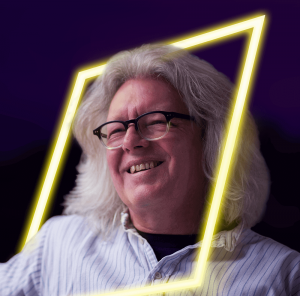
Jonathan is a Design Associate of a number of respected networks including; V&A Dundee, What Could Be and Design Council where he was a part of the team that developed the Double Diamond, and created the Design Opportunities Tool.
More info...
Jonathan é um designer independente que construiu a sua carreira utilizando a prática do design centrado no ser humano para ajudar as organizações a atingir novos níveis de inovação.
Começou a sua carreira no design de produto, onde concebeu uma vasta gama de produtos de consumo, desde brinquedos a assentos de sanita a produtos industriais para os sectores do petróleo, da pesca e da silvicultura. Todos os designs de Jonathan foram fabricados e vendidos com grande sucesso – sucesso que atribui aos princípios de design centrado no ser humano que o acompanham desde o início.
Jonathan faz parte de uma série de redes de associados respeitados. Como Design Associate for Design Council, iniciou o internacionalmente reconhecido Design Atlas, fez parte da equipa que desenvolveu o Double Diamond, e criou a Design Opportunities Tool, que estava no centro do programa de apoio empresarial Designing Demand. Fez parte da pequena equipa que liderou a criação e entrega dos seus programas de coaching, que aceleram a comercialização da ciência, aceleram o crescimento das empresas e transformam a prestação de serviços públicos. Jonathan trabalhou directamente com muitos dos clientes do Design Council, incluindo empresas de fabrico e serviços e organismos públicos de todas as dimensões, bem como os departamentos governamentais Home Office, BIS e Government Office for Science e EU Policy Lab.
Tendo ajudado a moldar e a fornecer Innovation by Design no Centre for Design Innovation na Irlanda – o primeiro programa de apoio empresarial centrado no utilizador patrocinado pela UE – Jonathan foi co-autor do Business Support Canvas; uma abordagem estratégica à avaliação, desenvolvimento e fornecimento de programas de design e inovação com financiamento público.
Os projectos continuam a ser diversificados; o Creative Decision Making Playbook for BBC Digital, o programa Design Thinking Accelerator para V&A Dundee e a introdução de estratégia orientada para o design para organizações de todas as dimensões. Jonathan é um Instrutor Principal Certificado para o Instituto LUMA em Pittsburgh, onde o seu trabalho apoia o rápido crescimento da LUMA e permite o seu alcance global com clientes que incluem McDonalds, Honeywell, Autodesk, Prudential e DBS; um dos principais bancos da Ásia.
O DOUBLE DIAMOND. UM ÍCONE OU UM CLICHÉ?
O Double Diamond tornou-se uma referência regular para o processo de desenho desde que foi publicado pela primeira vez pelo Design Council em 2004. Na altura, o Design Council esperava que “…desmistificasse o processo de design e o tornasse acessível a um público que não tivesse design…”. Usando exemplos da sua própria experiência, Jonathan leva tempo a reflectir sobre as origens do Double Diamond, a comentar as formas como tem sido utilizado e pergunta se ainda é relevante hoje em dia.
6th Edition
KAREL VAN DER WAARDE
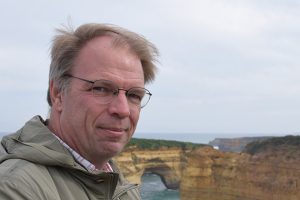
Professor of Visual Communication, specializing in information design, reflective practice, and visual arguments.
waarde@glo.be
More info...
Dr. Karel van der Waarde studied graphic design in the Netherlands (The Design Academy, Eindhoven (BA)) and in the United Kingdom (De Montfort University, Leicester (MA) and the University of Reading (PhD)).
He is principal of Graphic Design – Research, a consultancy specializing in the testing of information design about pharmaceutical products. The main activities are the readability tests for package leaflets, usability tests for packaging, contextual enquiries, and prototype development. The company develops leaflets, instructions, forms, protocols, and the information architecture for websites. www.graphicdesign-research.com
Avans University of Applied Sciences (Breda, The Netherlands) appointed him as scholar in Visual Rhetoric between 2006 and 2014. It was a research post to investigate the development and use of visual communication with a longer term aim to support the relations between practice, research and education. From September 2014, he teaches (part time) at the Basel School of Design (FHNW, Switzerland). Since March 2017, he is professor Visual Communication at Swinburne University in Melbourne (Australia).
Van der Waarde is a life-Fellow of the Communications Research Institute (Melbourne, Australia), a board member of International Institute for Information Design (IIID, Vienna, Austria) and editorial board member of Information Design Journal, Journal of Visual Communication, She Ji, and Visible Language.
GRAPHIC DESIGN AND VISUAL ARGUMENTS: ABOUT DIALOGUES, PERSUASION, AND COMMON SENSE?
What is graphic design?
Graphic design is – like most professions – changing continuously. In order to monitor this change, it is necessary to observe and describe ‘graphic design practice’. About 150 interviews with graphic designers showed that they always combine ‘visual argumentation’ and ‘reflective practice’.
Visual argumentation: Graphic designers seem to execute three activities: they consider visual elements (type, illustrations, schematic elements), they consider a visual strategy (how to relate the message of a client to a specific group of people), and they consider a longer term visual dialogue between clients and people, because graphic design is always part of a longer conversations.
Reflective practice: Apart from considering the visual structure of a message, eight other activities are necessary to facilitate the development of a visual argument: presenting, testing, implementing, organisation, evaluating a position, and considering a situation, a problem, and a perspective.
Not all projects contain all activities, and not all activities are equally important, but this is what graphic designers say they do.
Who decides what is good design?
There are at least six groups who can decide if a visual argument is suitable. Designers, clients, standards and legislation, professional peers, people/users, and society can all provide legitimate opinions about the quality of a design. These groups use different kinds of value systems, use different criteria, and all weigh arguments in different ways. It is always difficult to satisfy the expectations and needs of all six groups and a balance need to be found.
How to find this balance?
One way to look at graphic design as the ‘development of visual arguments’. Every design makes a claim that it is improving a situation, and thereby implicitly stating that the current situation is not satisfactory. Every claim need to be supported by evidence, reasons, and research findings. One of the major challenges for graphic design at the moment is to find this evidence, and to present it in such a way that all relevant value systems are dealt with.
JAN ECKERT
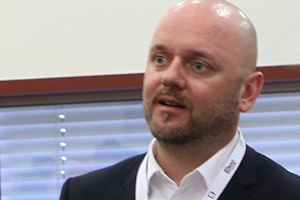
Design Educator and Researcher at Lucerne University of Applied Sciences and Arts
More info...
Jan Eckert is a Design Educator and Researcher at Lucerne University of Applied Sciences and Arts where he currently works as Head of the Master Program in Design. He has a PhD in Design Sciences from IUAV University of Venice and an international Master’s Degree in Interior Architectural Design from the University of Applied Sciences in Stuttgart, the Edinburgh College of Art and the University of Applied Sciences and Arts in Lugano. Before, he studied Interior Architecture at the University of Applied Sciences in Stuttgart and at the École Nationale Supérieure des Arts Décoratifs in Paris. Eckert first worked as Interior Architect in the field of Retail and Exhibition Design. As a Senior Researcher at Lucerne’s Competence Center for Typology & Planning in Architecture, he then started developing human centered methods and projects in the field of Workplace Design. He was a co–lecturer in Interior Architecture at Lucerne University of Applied Sciences and Arts, a visiting lecturer in Design at IUAV University of Venice, Berne University of the Arts as well as an invited lecturer at Universidad del Este, La Plata, Universidad Blas Pascal, Argentina and Izmir University of Economics, Turkey. In his doctoral thesis, he describes a concept he calls Handlungsspielraum. This concept embraces physical and digital artifacts that provide a specifically designed gap or space that allows users room to interpret how artifacts may be used.
DESIGN EDUCATION AND THE “Y-SHAPED DESIGNER”
The current expansion of design is no coincidence, no fashionable trend nor any idea of a small avant-garde. It is in fact the logical consequence of a massive social change“ – Florian Pfeffer, author of the book To do: the new role of design in a changing world points out what all too long has been ignored by design education. Most design curricula still stick to a very disciplinary image of the designer who provides his or her professional competence within a well-defined range of applications.
While redesigning our M.A. curriculum in design, we set out to question the disciplinary image of the designer in order to find an alternative, which matches the changing way professionals work together. Point of departure was the hypothesis, that 21st century designers mainly act as collaborators or Embedded Creatives within fields and industries, who primarily don’t belong to the design domain. We therefore argue for a design curriculum that supports the transition from working in disciplinary depth towards working across disciplines. We do so by providing a new M.A. curriculum in design, which focuses connecting competences and conversational learning formats. The most important pre–post curriculum change includes the shift from a disciplinary towards a problem–based design studio, co–teaching with multi–disciplinary faculty, context–based learning with partners from the industry and conversation–oriented teaching formats.
KATE GOLDSWORTHY
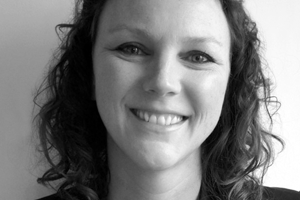
Co-Director of the Centre for Circular Design at University of the Arts London
More info...
Co-Director of the Centre for Circular Design at University of the Arts London.
She is a designer and academic working to bridge science, industry and design through multidisciplinary & practice-led research. Projects currently include Mistra Future Fashion (2015-2019), the EU Horizon 2020 project, Trash-2-Cash (2015-2018) where her work explores tools for lifecycle thinking and approaches for interdisciplinary circular design.
She has a longstanding working relationship, as board member with Worn Again, a revolutionary new recycling-tech company based in the UK. She first began her research with Textiles Environment Design (TED), and the Textile Futures research Centre (TFRC) in 2005 with the first UK practice-based doctorate focused on ‘designing textiles for the circular economy’. Her Laser Finishing process, developed in 2008, enables fully closed-loop recycling of polyester fibres at end of life, and has been exhibited internationally. She is currently a member of the ‘EPSRC Forum in Manufacturing Research’, an expert reviewer for ‘Fashion for Good’ and was named by the Guardian as one of their top ten circular economy experts in 2015.
NEW ROLES & RELATIONSHIPS FOR THE CIRCULAR DESIGNER MATERIALS. MODELS AND MINDSETS TOWARDS SYSTEMIC CHANGE.
Circular design first became relevant to textile materials through McDonnough & Braungart’s The Hannover Principles (1992) followed by the more widely cited Cradle to Cradle in 2002, where the sixth principle ‘eliminate the concept of waste’ pointed towards a far more holistic notion of materials recovery as compared to the ‘reduce, reuse, recycle’ mantra. They called for the optimisation of the ‘full life cycle of products and processes to emulate the state of natural systems, in which there is no waste’, and suggested that current methods perpetuated a cradle-to-grave strategy, which was ultimately linear in nature.
Circular systems thinking is built upon the oldest system of all – our ecological system. The model we aspire to is based on a synergistic network of cycles and open-loops which feed each other at multiple scales and speeds. These are complex and sophisticated transformations of materials and living matter. Within this network we will undoubtedly see both old and new technologies and processes contribute to the whole, with hi- and low-technology working together. The same system could include slow garments, upcycled from pre-loved ones or fibres chemically recycled back to virgin quality in a closed loop system where nothing is lost.
The Circular (Textile) Designer of the future, needs to fully understand both technical and biological cycles, yet research in the field has shown us that they will also need to understand how these cycles can interconnect; and at what speed these cycles work. Inter-disciplinary practice-based textile design research can generate new insights for this emerging design field and the potential for circular design is that it ‘connects’ through holistic relationships, participation and collaboration. It can, and should, work at both micro and macro levels (from materials to products to systems) to avoid the, often unintended, consequences which can come from looking only at parts of the lifecycle and value chain, rather than the whole.
This presentation presents practice based projects, from design researchers at CCD and beyond, which challenge and provide a basis for different approaches to circularity. Through these projects we begin to see emerging methods, roles and characteristics for the future ‘Circular Designer’ which can build towards truly systemic change.
RUI CIDRA
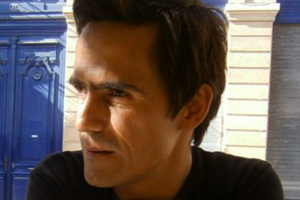
Anthropologist, ethnomusicologist and researcher at INET— MD
http://www2.fcsh.unl.pt/inet/researchers/rci
ruicidra@yahoo.com
More info...
Rui Cidra is an anthropologist, ethnomusicologist and researcher at the Instituto de Etnomusicologia, Centro de Estudos de Música e Dança (INET— MD), of the Faculdade de Ciências Sociais e Humanas, Universidade Nova de Lisboa. His research addresses the power relations and forms of political participation framing the production of Lusophone African music, particularly from Cape Verde. In his PhD. dissertation, Music, Power and Diaspora: an Ethnography and History between Santiago, Cape Verde, and Portugal (2011) he focused on the Cape Verdean music and dance genre funaná and the production of the santiaguense Cape Verdean subjectivity across the lines of creoleness, masculinity and national belonging between the colonial and postcolonial moments. In his postdoctoral research, taking place at the music department of the University of California, Berkeley, and at the INET-MD, Lisbon, he has been writing articles proposing a critical genealogy of the relation between music, nation and diaspora among Cape Verdeans based on the political thought of Amílcar Cabral, and on the transformations brought by the neoliberal order. He was adjunct editor of the Encyclopedia of Music in Portugal in the Twentieth Century (2010), a work in which he has also collaborated as writer of entries and articles on musicians and music genres of the diasporas of Lusophone Africa and pop rock produced in Portugal. He has taught postgraduate courses in Migration, Ethnicity and Transnationalism (2004-2011) and Ethnomusicology at the Faculdade de Ciências Sociais e Humanas, Universidade Nova de Lisboa.
O QUE É A ‘MÚSICA LUSÓFONA’? OS USOS DE UMA CATEGORIA POLÍTICA NO DOMÍNIO DA PRODUÇÃO CULTURAL
5th Edition
ALAIN FINDELI
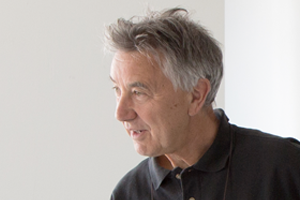
PhD in Aesthetics, Honorary Professor at the School of Industrial Design of the Faculty of Environmental Design of the University of Montreal (Canada).
http://projekt.unimes.fr/membres/alain-findeli/
alain.findeli@unimes.fr
More info...
Alain Findeli is Honorary Full Professor from the School of Industrial Design of the Faculty of Environmental Design of the University of Montreal (Canada) where he spent most of his career (1975-2007), and Emeritus Professor of design from the University of Nîmes (France) where he has been invited to develop research and education in social innovation through design.
Trained as an engineer in physics (INSA Lyon, 1968) and researcher in materials science (IIT Chicago and Polytechnics Montreal, 1968-73) he chose to reorient his career and interests toward the human and social aspects of engineering, technology, and design. He concluded his extensive study of the history of design education in his book ‘Le Bauhaus de Chicago: l’oeuvre pédagogique de Làszlò Moholy-Nagy’ (1995).
Alain Findeli’s latest research interests and publications cover general issues in the theory and practice of design (methodology, aesthetics, ethics), the phenomenology of atmospheres in landscape and interior design, as well as some crucial pedagogical aspects of design research education (doctorate). He founded the Master’s program in “Design & Complexity” in Montreal (1999) and co-founded the Master’s program in “Design-Innovation-Society” in Nîmes (2011). In 2006, he co-founded the international francophone design research community “Les Ateliers de la Recherche en Design” of which he is the president. He is considered a key actor in the creation of PROJEKT (project.unimes.fr), the unique French design research lab in social design (2016).
Member of the scientific committee of magazines as Design Issues (MIT Press), The Design Journal (Bloomsbury), Design and Culture (Bloomsbury), l’International Journal of Design Sciences and Technologies et Sciences du design (PUF).
FROM THEORY TO PRACTICE AND RETURN: A FRUITLESS DICHOTOMY IN DESIGN
The lecture will begin with the following questions: Is it necessary to have a design theory to teach design practice? If so, what would such a theory be like? The evolution of the reflections and models by which a tentative answer to these questions has been explored will then be presented. Such evolution must indeed be considered the task of design research. In conclusion, it will be suggested that to oppose design practice and design research is counterproductive, especially in pedagogical situations.
MARAVILLAS DÍAZ GÓMEZ

PhD in Philosophy and Educational Sciences, Titular Professor at Universidad del País Vasco – Euskal Herriko Unibertsitatea, Spain
More info...
PhD in Philosophy and Education Sciences, Professor of the area of Didactics of Musical, Plastic and Corporal Expression of the University of the Basque Country. His research interests are related to course curriculum and music, creativity and interculturality. Author of papers in indexed journals, books and book chapters, among others: Introducción a la Investigación en Educación Musical (Enclave Creativa 2006); Aportaciones teóricas y metodológicas a la educación musical (Graó, 2007); Creatividad, una constante en el currículum (UC, 2007) Metodologías y líneas actuales de investigación en torno al aprendizaje de la música (Graó, 2010); Investigación cualitativa en educación musical (Graó, 2013).
She has participated in numerous Scientific Committees as an expert evaluator, and is also a guest speaker in various national and international research and teaching forums. During the years 1996-2006 he has presided over the Society for Musical Education of the Spanish State (SEM-EE). He coordinated scientific congresses, seminars and conferences highlighting the direction of the XXVI Conferencia de la International Society for Music Education, held in July 2004. He is a member of the Basque Government’s Department of Education, Culture and Language Policy . He has also directed the research master’s degree in Psychodidactics: Psychology of Education and Specific Didactics of the University of the Basque Country (2011-2015) and has been a member of the Permanent Commission of the Master’s and Doctorate Programm of his University (2012-2015 ).
TEACHING AND RESEARCH: AN ATTRACTIVE AND NECESSARY INVESTMENT IN MUSIC EDUCATION.
An increasing number of research studies in art education and therefore in music education have given us important transformations in the way teaching and learning are organized, although our studies are little known by researchers from other educational areas and by society in general.
The recognition of the investigative capacity, in the profile of the musician, was not an easy task.
The purpose of this intervention is to warn about this situation and about the need to look for ways of recognizing and diffusing the task that is done. It insists on providing collaborative links between
researchers and experienced practitioners with young researchers and thus creating symbiotic research context. However, there is evidence of the benefit to music education, academic collaboration
with disciplines that have a practical or production component such as the visual arts, the media, film studies, and so on. Research in music education allows us to understand research training as a dynamic and progressive process of the teaching function, which makes it an attractive and necessary investiment.
FERNANDO MOREIRA DA SILVA
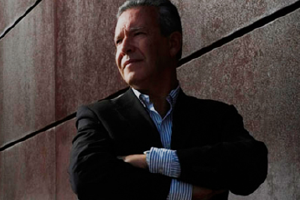
Cathedratic Professor at Faculdade de Arquitetura at University of Lisbon (FA/ULisboa);
http://ciaud.fa.utl.pt/index.php/pt/membros-2/design/inves-efect?id=677
More info...
PhD. and Master degree in Built Environment by the University of Salford, UK; PhD. at the Technical University of Lisbon, in Architecture, Specialization in Visual Communication; Postdoctoral in Visual Communication Design, Inclusive Design and Color by the University of Salford;
President of CIAUD (Center for Research in Architecture, Urbanism and Design); Coordinator of the Scientific Area of Design, Coordinator of the Masters in Design and Coordinator of the Doctoral Degree in Design at FA / ULisboa;
Member of the FCT panel for the award of doctoral and postdoctoral fellowships in Design, Architecture and Urbanism.
Author of several scientific articles in peer-review and impact-factor publications, author of book chapters and books such as “Colour and Inclusivity: a Visual Communication Design Project with Older People” (2013) e “Colour/Space unity, a unity of visual communication” (2011).Often invited as keynote speaker of conferences, congresses and seminars in Portugal and abroad.
PROCESSES AND DESIGN – FOCUS ON TEACHING AND RESEARCH
The relationship between teaching, research and society is becoming stronger, trying to articulate theory and practice, so that students are able to achieve progressive and more complex skills, to prepare them not only for the challenges of the profession, but also for the awareness of the need for lifelong training. This change of paradigm is leading to a more assertive attitude, giving greater importance to processes and methods in design development in design, relocating the approach that was previously focused on results, the final product, moving towards the models, methodologies used from the conception stage, through the development of the products and their final concretion, to the post-project evaluation. On the other hand, research, with an acquisition of knowledge about the methods, techniques and tools that can be used in the investigative process, has become a fundamental component both for teaching and for professional activity, in this case, to designers.

